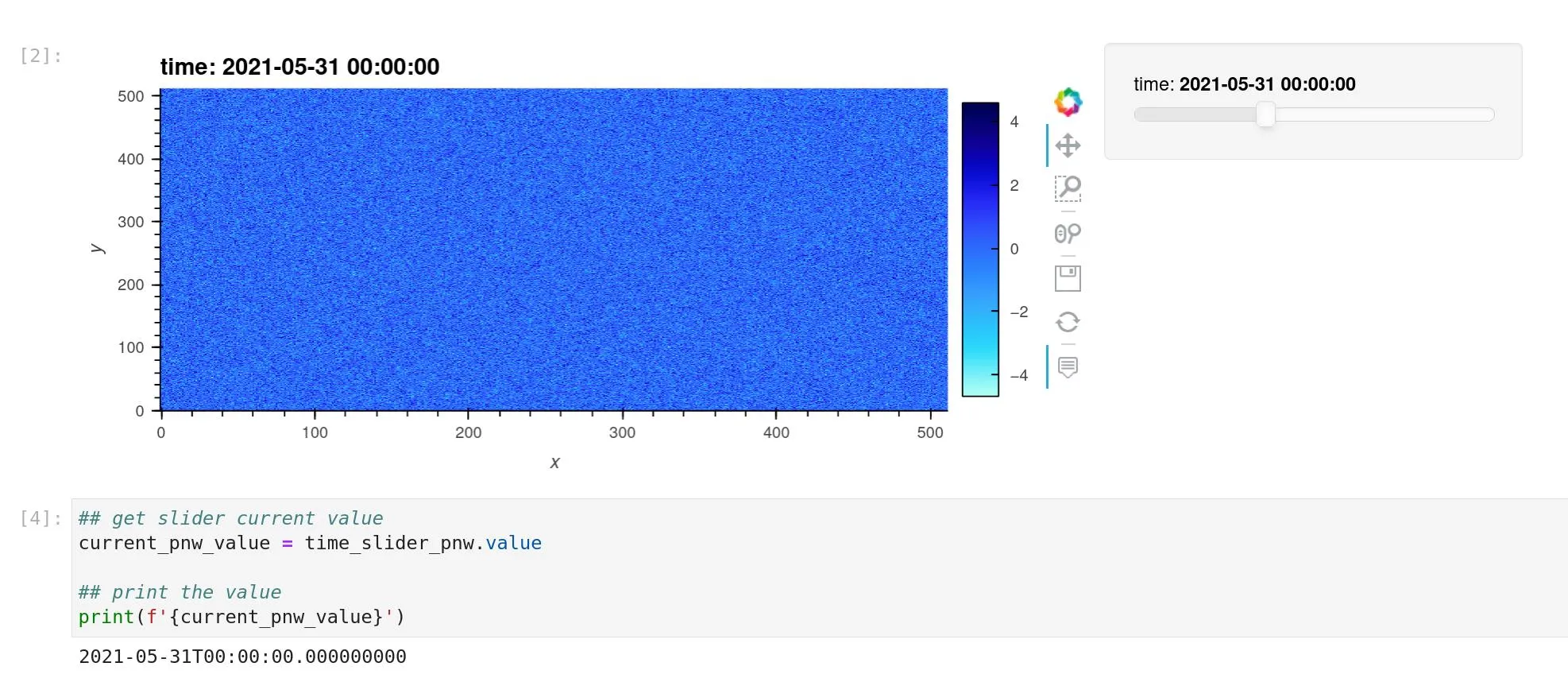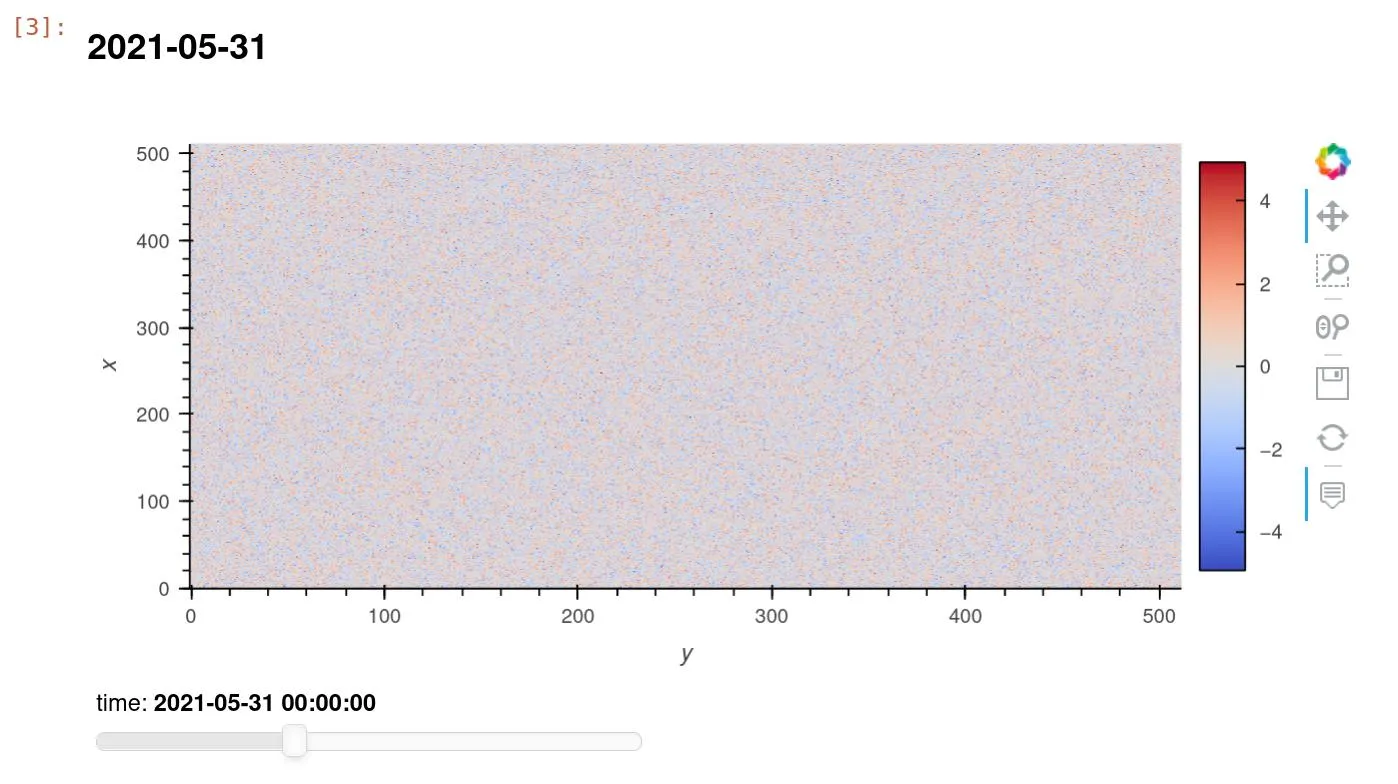创建基于xArray数据的HoloViews绘图(QuadMesh)时,任何缺失的维度都会自动创建小部件(例如滑块),以便于数据探索。例如:
hv_ds = hv.Dataset(data)
plot = hv_ds.to(hv.QuadMesh, kdims=["lon", "lat"], vdims="depth")
由于数据包含12个月的数据,HoloViews将基于经度和纬度创建QuadMesh,使用深度作为值,然后提供一个滑块小部件来选择月份。它将把所有内容放在一个类似于这样的HoloMap中:
HoloMap containing 12 items of type QuadMesh
--------------------------------------------
Key Dimensions:
month: 1.0...12.0
Deep Dimensions:
lon: -280.0...80.0
lat: -78.0...-44.6
depth: 3.5...4796.6
我想获取“月份滑块小部件”的值以更新另一个图表,但我找不到访问它的方法。没有 plot.get_widget_value() 或类似的东西。有什么想法可以获取指针或处理器吗?

